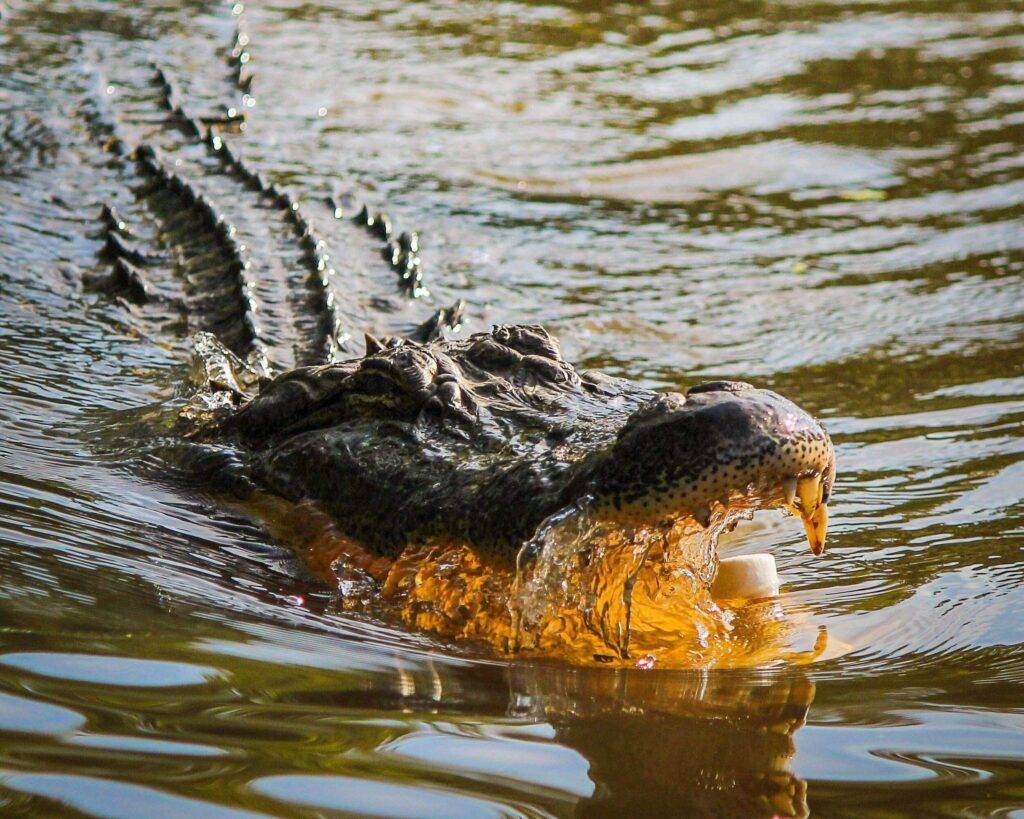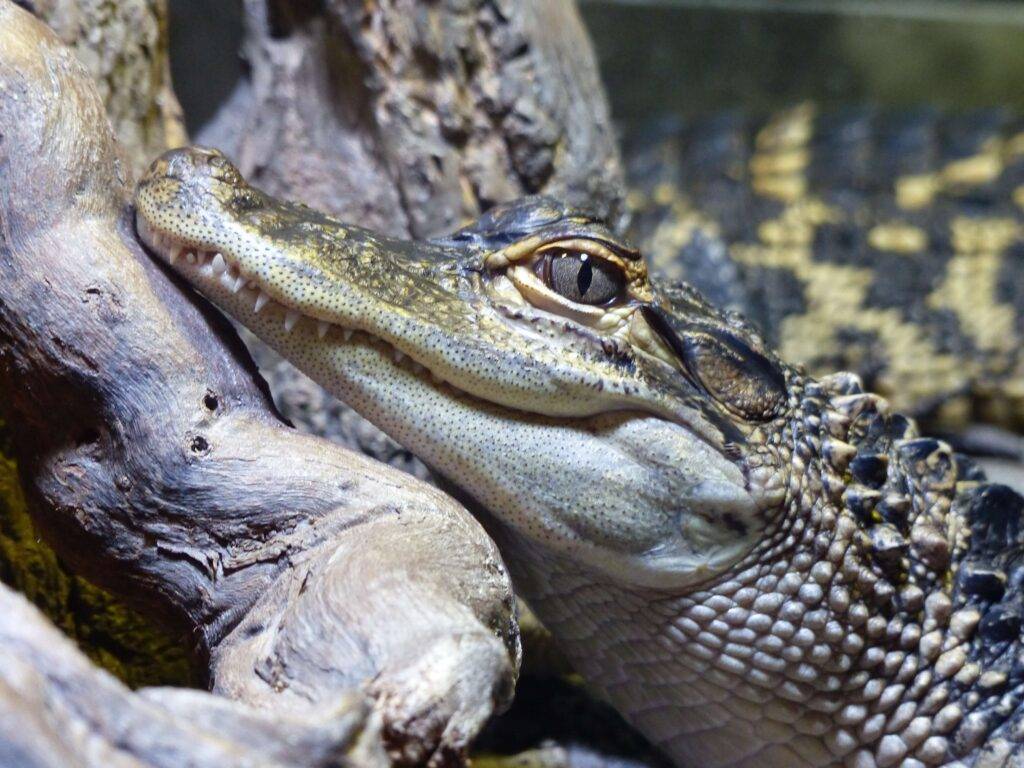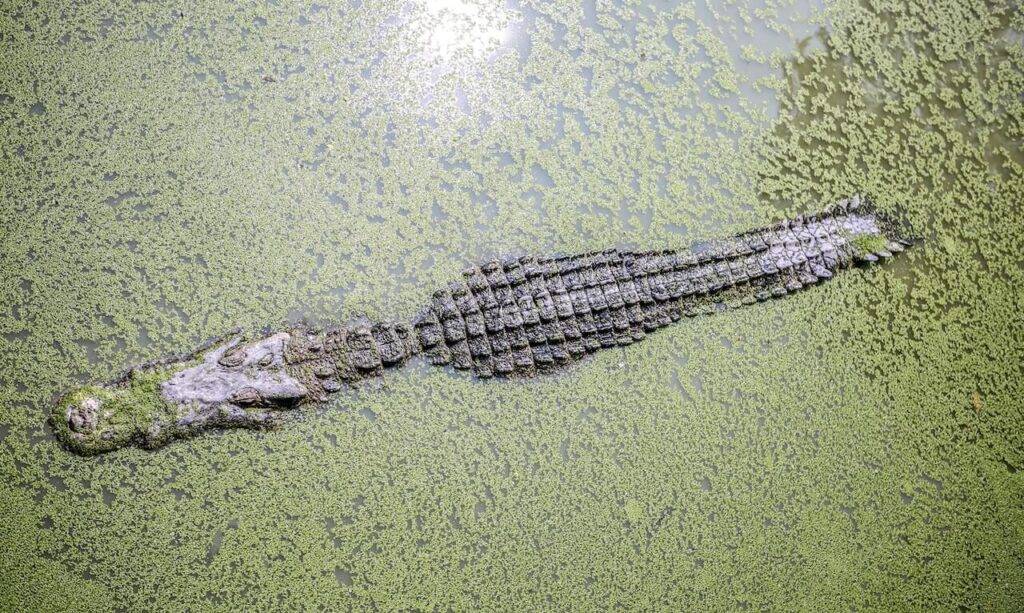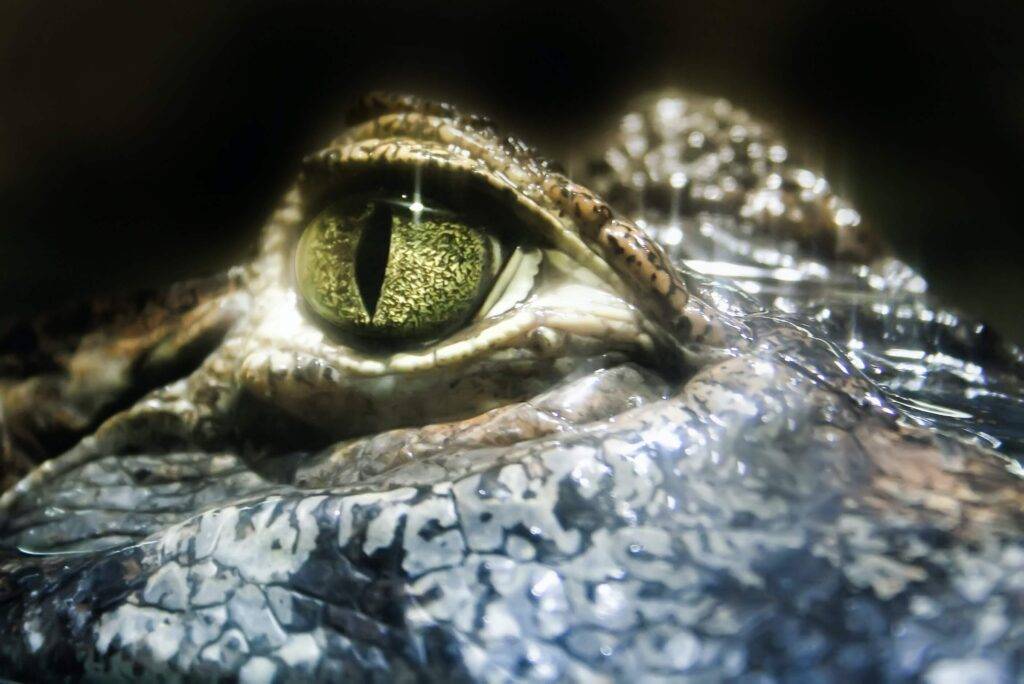Crocodiles are incredible durable animals, so let’s have a look at some of the incredible facts about crocodile eyes. Some of them might surprise you!
Crocodiles Unique Eye Placement
One of the most distinctive features of crocodiles is the position of their eyes. Unlike most animals, their eyes are positioned on the top of their heads, allowing them to keep a low profile in the water while keeping an eye on their surroundings.

Nictitating Membrane
Crocodiles have a special protective membrane called the nictitating membrane that covers their eyes. This thin, translucent layer helps protect the eyes while allowing the crocodile to see clearly underwater. It acts as a built-in pair of goggles.

Crocodiles Have Excellent Underwater Vision
Crocodiles have evolved to have exceptional vision underwater. Their eyes contain a large number of rod cells, which are highly sensitive to light and allow them to see well even in dimly lit environments, giving them a significant advantage when hunting.

Crocodile Eyes are Sensitive to Ultraviolet Light
Crocodile eyes are also sensitive to ultraviolet (UV) light, which is invisible to humans. This adaptation helps them spot prey and distinguish different objects and individuals in their environment, making their vision even more finely tuned.

Crocodiles Night Vision
Crocodile eyes are finely tuned for hunting. Like many other nocturnal animals, crocodiles possess a reflective layer behind their retinas called the tapetum lucidum. This layer enhances their night vision by reflecting incoming light back through the retina, increasing their chances of spotting prey in low-light conditions.

Crocodile Tears
A surprising facts about crocodiles is that the crocodile is partial to regular bouts of weeping. It is a fact that crocodiles have been observed shedding more than a few tears when tearing into a tasty meal. The crocodile’s habitual cry reflex is an involuntary biological behaviour. It is simply a symptomatic side-effect of the effort exerted when chomping and chewing.
The crocodile’s intense high-pitched hisses and huffs produce fluids, which froth and drip from the eye sockets. So crocodile tears are real…but only when they come from crocodile eyes.

Binocular Vision
Crocodiles have excellent binocular vision, meaning their eyes work together to provide depth perception and accurate judgment of distances. This is crucial for their hunting strategy, allowing them to accurately gauge the position of their prey in relation to their own.

Crocodiles Sleep with One Eye Open
Crocodiles sleep with one eye open in order to scout their surroundings for threats or prey, a new study has found. Researchers who used infrared cameras to examine the behavior of juvenile saltwater crocodiles in an aquarium found that the predators use a technique called “unilateral eye closure”.

































